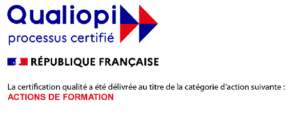
This training course aims to raise awareness among system and product architects of the cybersecurity concerns, issues, constraints and challenges that can impact their current responsibilities, deliverables and day-to-day work.
No industrial safety experience required. However, knowledge of industrial systems and some notions of IT, electronics and embedded software are desirable.
If remote :
This course is aimed at people interested in the design aspects of industrial architecture. Electronics enthusiasts and professionals, as well as IT security professionals (developers, architects, integrators, hardware designers, project managers).
Expert in industrial cybersecurity.
Assessments at the beginning and end of the course, quizzes, etc.
5 working days before the start of the course (if OPCO funding).
A training certificate complying with the provisions of Article L.6353-1 paragraph 2 is issued to the trainee.
2023 :
Satisfaction rate : 81%
Number of sessions : 2
Number of trainees : 11

I subscribe to the training newsletter
Sign up for
our newsletter
© 2024 SERMA GROUP – Terms and Conditions – Data protection policy
Télécharger le catalogue de formation SERMA
Download the SERMA training catalog